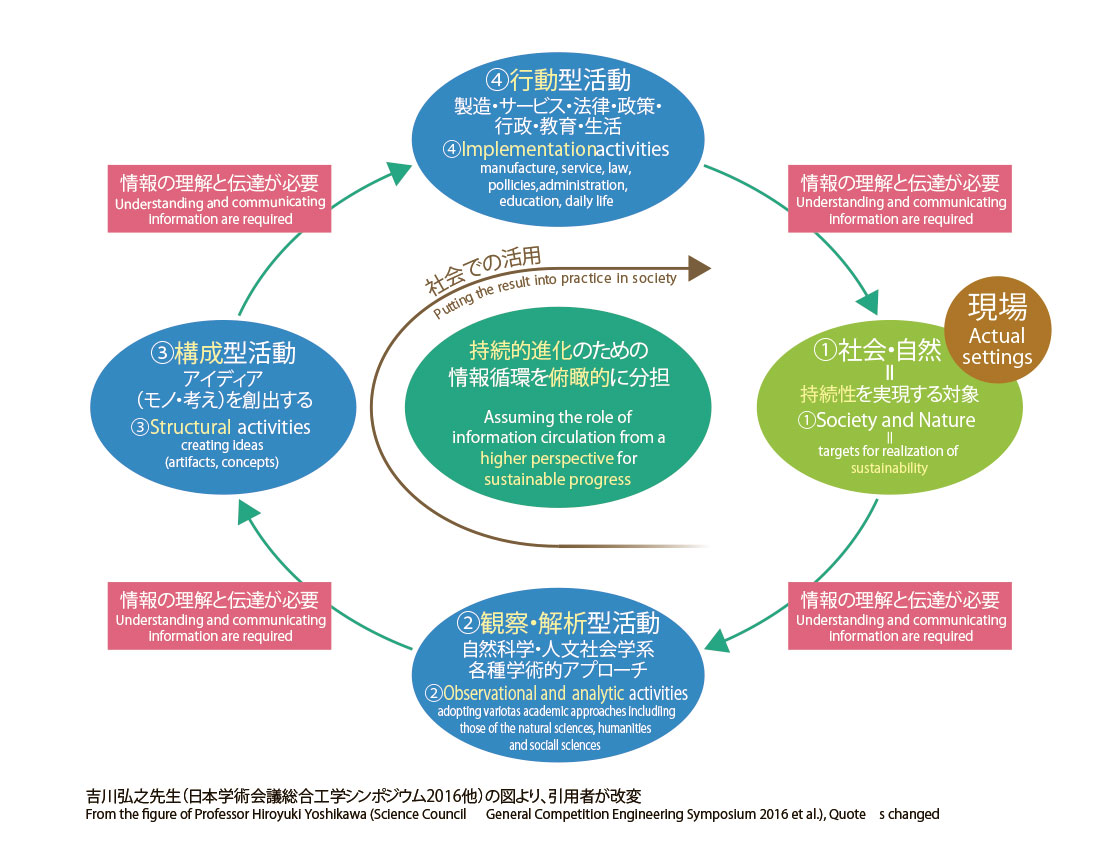Targeting Actual Settings in Health Systems
Our graduate school focuses on the actual settings of health systems. In other words, we concentrate not only on medical care that is centered on outpatient and inpatient treatment at hospitals, but also on comprehensive issues and challenges related to the four inevitabilities of human life (birth, aging, sickness and death). These settings include medical care at home, nursing services and preventive medicine for prolonging healthy life, as well as how to approach life in its final stages. In such settings, a number of challenges and distressing issues continue to arise, which science and research haves yet been able to address, due to their divergence from theoretical concepts. Such a wide variety of challenges eagerly await solutions that will lead to greater happiness and well-being for humankind. To make further progress in solving these issues, it is essential that we intuitively recognize and verbalize any distressing conditions in actual health settings and also come up with new ideas based on these verbalized findings, while proving their validity. Such ideas should not only consist of physical things but also of concepts. For example, they may include a specific new product, a plan for a new system or a framework for collaboration. They may emerge from the natural sciences, including engineering, or from the humanities and social sciences. One of the major roles of the research, science and academics pursued by students at this graduate school is to ensure these novel ideas are accurate and based on reliable evidence.
This graduate school takes an interdisciplinary approach to science. Activities aimed at solving various challenges can be explained through the following cycle, consisting of four steps as shown below (according to Dr. Hiroyuki Yoshikawa):
- Society and nature (actual settings),
- Observational and analytic activities: Addressing these settings through academic approaches,
- Formulation of ideas (new products and systems based on acquired information)
- Practical application of ideas and engagement in appropriate behavioral activities, And then returning to:
- Nature and society (actual settings) (putting the results into practice in society)

The process in which the ideas embodied through this cycle are applied to the natural world and human society is called “putting the results into practice in society.” Less successful ideas are shaken out as the cycle repeats, while the ones that remain are adopted and take root as a means by which human beings can improve nature and society. We need as much human talent as possible to facilitate in the implementation of this cycle.
Our graduate school aims to cultivate professional talent that is capable of exploring issues arising from actual healthcare settings, in cooperation with the many people working in healthcare facilities and relevant organizations, all while creating ideas that contribute to the solution of these issues and putting them into practical use in society.
